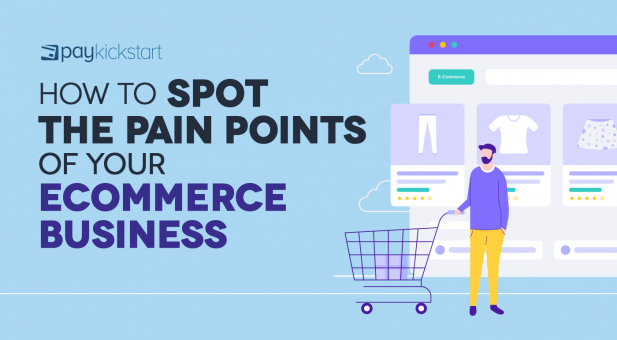Subscription growth hack (by PayKickstart)
Facebook Group - 3,932 members
Visit Group
A customer pain point is an issue experienced by someone who does business with you. It could be a challenge related to the person or their situation, or a problem connected to your company.
Perhaps you offer eco-friendly products at prices significantly lower than competitors. In that case, people may come to your website to relieve their pain points related to saving money. Conversely, perhaps your site has a long, complicated checkout process. That could become a pain point that encourages people to shop elsewhere.
Pain points are as varied as your customers. However, marketing experts generally place them in four main categories:
Numerous pain points could apply to your eCommerce site, and you may discover they fall into more than one category. For example, people may feel there are too few options available for getting help at your website and that the checkout process takes too long. In that case, you have both support and productivity pain points to address.
Knowing what the pain points are is the first step in tackling them. Here are some actionable ways to identify the pain points associated with your eCommerce business.

Source: https://www.pexels.com/@canvastudio
People who have visited and shopped at your website will likely have a wealth of useful input about potential improvements. Consider tracking the things they bring up most often when they discuss your site.
For example, maybe you encourage people to review their experiences after using your website. Those that do might frequently say things like, “I wish I could see products similar to those that interest me” or, “I’d love a live chat feature.” In such cases, you can use the feedback to enhance the site and relieve pain points.
You’ll get the best results by working with an expert or company that is well-equipped to meet your site development needs over the long term. That’s especially true if you anticipate them changing over time.
Alicia Tam has a Hong-Kong-based eCommerce store that initially only had a physical presence. She experienced numerous pain points when adding new website features. First, the company that launched the site folded. Then, the next person brought on board wanted to redesign the site from scratch, which would have caused significant delays. Thus, Tam advised, “It is very important to find a reliable, trusted eCommerce vendor so that they can really work on the website with you in the long term.”
A great way to find pain points is to go through your site as users would. Some of your features and functionality may seem great on paper but end up causing problems that discourage people from returning for future purchases.
Testing your site on multiple browsers and devices is a great starting point. Recruiting a team of people to help test is another smart decision. After all, individuals don’t all interact with websites in the same ways.
Ask your testers to document any issues they encounter or confusing site characteristics. If you have the human resources to accommodate it, think about implementing a system where people work in pairs. One person could actively engage with the eCommerce site while another individual observes them and takes notes. That approach could help you more naturally capture how people use it.
Another option is to assign one person to examine each page or website feature. Doing the job thoroughly reduces the chances of something getting overlooked.
eCommerce site pain points don’t strictly occur when people browse and buy things. Some consumers may also encounter challenges after receiving their orders. If that happens, many may not purchase from you again.
Research indicates that repeat customers make 67% larger purchases than new ones. That’s why it’s so crucial to get to the bottom of any issues that may turn off first-time buyers.
One proactive option is to ask people how they felt about everything that happened after they confirmed their transactions at your site. Did their deliveries arrive within the specified timeframe? Were the products adequately protected? Did customers have any issues opening the packaging? How did people feel about the shipping materials?
Your goal is to determine whether anything happened after people finalized their purchases that would make them think twice about buying from you again. It’s also OK to get feedback about anything that occurred before customers decided to place an order. However, many company representatives overlook opinions after the sale. Collect feedback holistically to get the most accurate picture of shoppers’ feelings

Source: https://www.pexels.com/@thecoachspace
Falling profits and decreasing customer numbers should make eCommerce providers realize it’s time to fix underlying website issues with. Maybe you relate to that situation.
Customers will sometimes explicitly name the companies they purchase from after leaving your business. If you notice a trend of people saying they now shop elsewhere, go to those competitors’ websites to take a closer look.
You may find that the competing sites function better on mobile devices, have faster checkout processes or offer more ways for people to get in touch with customer service representatives. Use a critical eye when comparing your site to other options. How do competitors excel in ways that could attract more customers than you do?
Remember that some of the eCommerce sites that outperform yours may simply rank higher in search results. If so, a better search engine optimization (SEO) strategy makes those websites more obvious to consumers. Many people lack the patience to look through the first page — or even the first few sites — they see after typing in a search query. Thus, resolving customer pain points may involve focusing on SEO.
Your website’s user interface consists of all the elements that allow people to interact with it. For example, a contact form might include:
Your first inclination regarding your site’s user interface may be to include as many features as possible. However, it’s often best to go with a simple approach and avoid confusing people. Adding too many elements can cause a cluttered look that overwhelms instead of excites.
Look at your site as if you were a new user. Is it easy to immediately locate the shopping basket, account login area, search box and other fundamental features? If not, a redesign could help you alleviate pain points and give shoppers better experiences.
People with disabilities may experience pain points when visiting your site if you have not taken precautions to make it as accessible as possible. Here are some of the ways you can do that:
Besides following those best practices, consider installing an app that examines your website to see how it stacks up against accessibility standards. Those tools will help you cover the basics, but they don’t always spot all the ways your website falls short.
That’s why you may find it beneficial to include people with disabilities on your testing team. Their life experiences give them valuable insights that others may not have.
Another way to relieve these pain points is to let people place orders outside of the website. If someone finds that their disability — or anything else — makes it difficult to use your site, could they place an order by phone instead? Removing any barriers to usage and purchasing should make people more likely to become loyal customers.

Source: https://www.pexels.com/@tima-miroshnichenko
Some customer pain points occur when people come to your site and perceive that your offerings are not sufficiently appealing. In that case, they may navigate away before learning enough about your products, services or overall brand to develop a different opinion.
For example, if you offer an e-book that is substantially more expensive than other options, you must clarify what makes it worth the extra cost. Otherwise, people might believe your eCommerce products cause financial pain points and avoid buying.
You might mention that the e-book comes with exclusive supplementary digital content. It could include an in-depth interview with a thought leader, accompanying worksheets or checklists, and a sample chapter of an upcoming book on a similar topic.
Alternatively, maybe your e-book’s pricing structure lets the author keep more of the profits compared to other providers. In that case, customers may conclude that you offer the superior choice by supporting the creator’s livelihood.
Make sure your product descriptions are updated and reflect the specifics for all customers, too. For example, if you offer free international shipping as a perk, does it apply to people in all countries? If you released an updated product to eliminate a previously discovered pain point, does the new description call attention to the improvement?
Many people love the convenience of online shopping. If you’re worried they might not have the best experiences when using your site, don’t feel too discouraged. The first step to solving those problems is confirming they exist. You can do that with the tips here.
After making substantial changes to reduce or get rid of pain points, consider polling your customers to see if the alterations were received favorably. Getting proof of the results you’d hoped to achieve is an excellent motivator.
If you’re concerned that planned changes won’t bring desired outcomes, consider running A/B tests. Those assessments let you show different versions of sites to certain user groups. You can then look at the data and see how people reacted. For example, did more people fill out your shop’s newsletter signup form when it had only four fields instead of nine?
Treat tackling your website’s pain points as a journey. You can’t expect to fix them overnight, and you’ll probably find more as time passes and your user base grows. Maintaining an ongoing awareness of shortcomings and committing to promptly addressing them will give users the best possible experiences.
Eleanor Hecks is editor-in-chief at Designerly Magazine. She was the director at a marketing agency before becoming a freelance web designer. Eleanor lives in Philadelphia with her husband and dog, Bear.
Read More About Eleanor Hecks